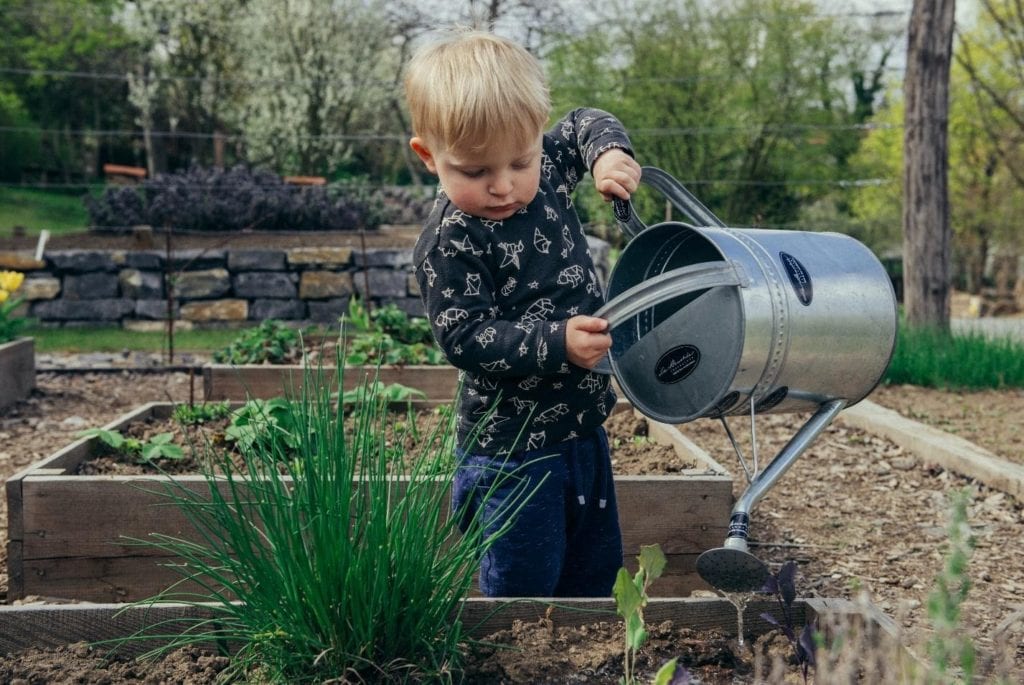The world’s human and animal populations are intrinsically dependent on pollination. Without it, one third of our entire food supply would not exist. Creating a thriving pollinator garden, allows an opportunity for gardeners to actively protect bees, butterflies, beetles, wasps, hummingbirds, moths, and more. There are up to 1,500 different specifies of vertebrates, birds, mammals, insects, and even mosquitoes, that act as pollinators.
Creating a thriving pollinator garden takes some planning, and can be a bit of an investment. But it’s not only a time, effort, and financial investment on the part of the gardener; it’s also an investment in the stability and functioning of our world’s habitat.
Choose the Right Location
Ideally, the full garden should incorporate all sun and shade options, areas for plants that appreciate full on sun, and areas for plants that appreciate shade. Keep in mind that what you are planting is meant to entice pollinators to visit, and many of them, like butterflies, enjoy being in the sun, as well as, being shielded from the wind.

Keeping the Garden Safe
When establishing a pollinator garden, you also have to keep in mind that it’s ultra-important to safeguard plants and seedlings. Deer and other wildlife are known to trample through gardens, and eat what they want. The best solution to this problem is to install deer fencing which you can obtain from trusted suppliers like deerfencing.com. It is the most reliable deer control available. Strong, tall, completely earth-friendly, and able to survive the elements for at least 25 years, deer fencing creates a natural border for your pollinator garden, that is safe for deer, the earth, and your plants.
How to Choose the Best Plants for Your Land
The type of soil that you have to work with will largely influence the vegetation and flowers you end up planting. This, in conjunction with how much sun the land gets, will be huge determinants as to what plants will be able to grow there. Consider researching a soil map to find out the nature of your soil.
Depending on your location, there will be some plants that are more suitable for healthy growth than others. Find out what wildflowers, and milkweed species, work well in your area, as what is native to your location, will be the plants that flourish and need less maintenance. Consider planting perennials so you won’t have to re-plant annually, and choose plants that have not already been treated with chemicals.
While the summer season might be the most active pollinator time, remember that pollinators may start early in the spring, and carry pollen from the stamen to the stigma of flowers into the fall. Therefore, it’s important to plant flowers, and plants that bloom at varying times of the year, to encourage the birds and insects to visit your garden, again and again.
Starting Your Garden
If you are choosing a patch of land in your yard where grass is growing, you’ll need to remove the grass, and upturn the soil to loosen it, in preparation for planting. Scope out the perimeter for deer fencing, and design the layout of your garden, with pencil and paper, to decide what plant goes where, and how far each should be spaced from another.
If you start this process at the beginning of the season, seeds may be your best course of action, because you have more control over their livelihood; they are cheaper, and more plentiful. If you are starting later in the season, plants that have already been rooted, and sprouted, will help cut your time and efforts in half, for the same results. Places like nurseries and farm markets are ideal for finding plants that have already germinated, and are ready for re-planting.

A Word on Bees
Honey bees are the number one pollinator on the planet. There has been much speculation and anxiety, recently, about the downward trend of bee populations. While it’s difficult to know, for sure, why the number of colonies has plummeted, you can do your part to respect them, and provide a safe place for them. If it’s right for your area, consider growing some of the plants listed below, as bees tend to favor them the most:
- Marjoram
- Lavender
- Crocus
- Lilac
- Foxgloves
- Abelia
- Pussy Willow
75% of all plantings are for food. Without pollination, the world cannot create the food that humans and animals need to survive. Being ecologically responsible has many different faces. It can mean recycling, buying items that are able to be recycled, walking instead of driving, buying, and using appliances that rate high in energy savings, and more. One thing that often goes overlooked, is the ability to create a sustainable and wildlife friendly habitat within each person’s own plot of land, no matter how big or how small it is in size. Creating a safe space for pollinators to thrive, and perform the tasks which benefit all of us, helps us to peacefully coexist with the planet.






